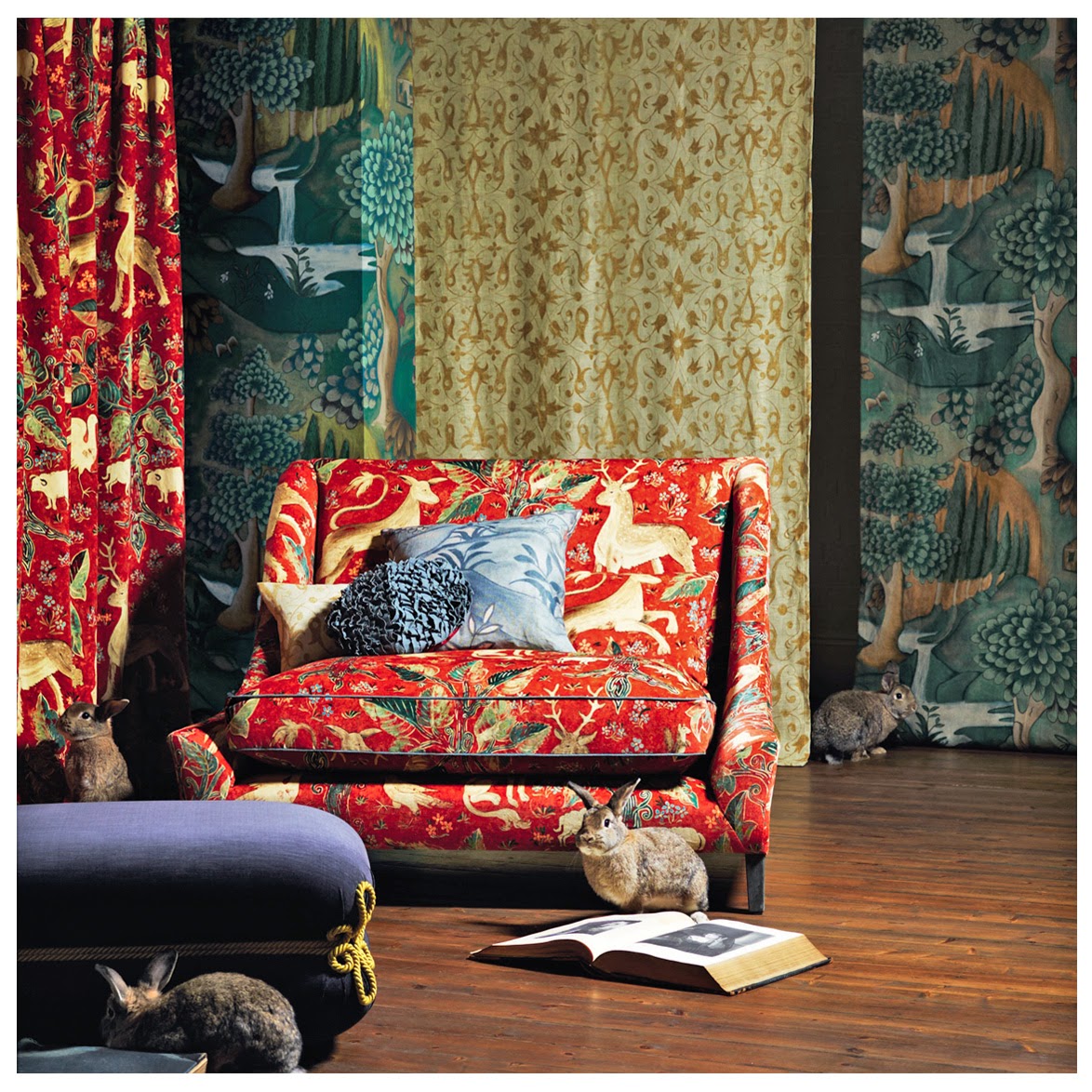 |
| Bacchus linen in Meade colourway |
The awards were announced at a glamorous breakfast event at
Ham Yard, the stunning new Firmdale hotel in Soho.
Homes and Gardens editors Giles Kime and Deborah Barker hosted the event and Firmdale's design director Kit Kemp gave a talk about the development of this fabulous hotel.
(I am now completely besotted with Kit Kemp style - it's a blast!).
The Judges said of Bacchus:
"Different to anything else, Lewis and Wood’s fabric is interesting and beautiful, with a stunning soft palette.”
 |
| Homes & Gardens Fabric Award for Bacchus |
Bacchus is part of Lewis and Wood's
English Ethnic Collection launched in March this year. I joined artists Su Daybell and Flora Roberts in creating six distinctive designs united in their dynamic and large scale format.
 |
| The English Ethnic girls: Melissa White, Flora Roberts & Su Daybell |
Lewis and Wood, being a fairly small UK fabric house, are unhindered by trends and seem to thrive on innovation and originality. It was fascinating and exciting collaborating with them and I'm thrilled with the resulting
Bacchus and my other design;
Rococo (below).
 |
| Rococo wallpaper in Heraldic colourway |
Read more about
Rococo in
this post
 |
Bacchus in meade colourway.
Seen here in front of a Swedish bureau by Lorfords Antiques |
Bacchus is a large scale swirling multivine, derived from a rare black and white Elizabethan wall painting in Kent.
 |
| 16th century multivine wall painting in a private house in Kent |
It's a masterful, full wall painting that would have been carried out by itinerant craftsmen during our late flowering Renaissance. I've interpreted the design in various ways over the years so it has become an old friend:
 |
| Multivine as a painted cloth battened to walls in a Norfolk castle |
 |
| Multivine curtain: hand painted linen |
 |
| Multivine cushion: hand painted grain sack |
 |
| Multivine fresco secco: hand painted, plastered wall panel |
The original painting is very large scale (about 5m wide x 2m high) so to coax it into a manageable repeat I pulled out a central element to maintain the scrolling flow, nudging it into a more formal arrangement. All the while trying to maintain the spirit of the original.
.JPG) |
| Melissa painting Bacchus artwork for Lewis & Wood |
The design is finished with the original border which, in the 16th century frieze, runs across the top. Here we have placed it down both sides of both the fabric and the wallpaper so that it can be left in place or detached to use as a trim.
 |
| Bacchus in "malt" colourway |
The whole repeat runs up and down vertically and, if you trim the border, it joins horizontally as a half drop repeat.
The images below show how the trimmed border can be cleverly used to frame walls and furniture.
 |
| Bacchus wallpaper in Grigio colourway |
 |
| Bacchus linen in Grigio colourway |
I adore the Kent wall painting with its honest, spontaneous and bold execution. It exemplifies why I pursue the wall paintings of this period and thrive on reviving them to be appreciated today.
 |
| Detail of 16th century multivine wall painting |
Homes and Gardens also nominated Su Daybell's turbulent
Force 9 wallpaper from the English Ethnic collection:
 |
| Detail of Su Daybell's Force 9 wallpaper in Big Blue colourway |
It was up for
Best Wallpaper over £40 a roll. See all the Homes and Gardens winning fabrics and papers on their
Living Beautifully website.
Meanwhile here are all 6 of the
English Ethnic designs:
 |
| English Ethnic all 6 designs |
Further exploration:
Lewis & Wood
Homes & Gardens magazine
Su Daybell artist and florist aka
Twig of Tetbury
Flora Roberts artist
Firmdale Hotels
Mike Garlick photography (for Lewis & Wood)
and of course
me and all my stuff










.JPG)





















